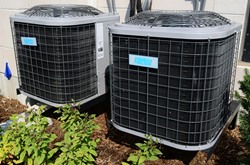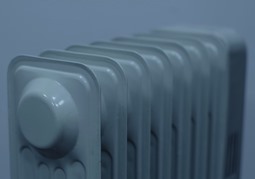How to Choose the Right HVAC Training Program near Wall South Dakota
 Now that you have made a decision on a career as a heating and air conditioner specialist, the next step is to find an HVAC trade school near Wall SD. But with so many to select from, how do you choose the right one to obtain the training that you need? Some prospective students will make their selection based entirely on the price of tuition or how close the school is to their home. While these are significant factors to consider, they are not the only ones to investigate. Just some of the other factors that you need to investigate are the graduation rates of the HVAC schools, their reputations, and if they are accredited by professional trade organizations. These and other benchmarks will be covered in more detail later in this article. But before we examine how to choose an HVAC training program, let’s look at what a heating and cooling professional does to become a licensed professional tradesman.
Now that you have made a decision on a career as a heating and air conditioner specialist, the next step is to find an HVAC trade school near Wall SD. But with so many to select from, how do you choose the right one to obtain the training that you need? Some prospective students will make their selection based entirely on the price of tuition or how close the school is to their home. While these are significant factors to consider, they are not the only ones to investigate. Just some of the other factors that you need to investigate are the graduation rates of the HVAC schools, their reputations, and if they are accredited by professional trade organizations. These and other benchmarks will be covered in more detail later in this article. But before we examine how to choose an HVAC training program, let’s look at what a heating and cooling professional does to become a licensed professional tradesman.
Becoming an HVAC Tech
 HVAC is an acronym that is frequently used in the trade that stands for “Heating, Ventilation and Air Conditioning”. HVAC contractors provide services for the installation, repair and maintenance of air conditioners, furnaces, boilers, hot water heaters and heating systems. As skilled tradesmen, they are typically mandated to be licensed, though each state and local municipality has its own criteria. Attaining professional certification is not compulsory, but a voluntary way for Wall SD HVAC techs to prove that they are highly qualified and accomplished in their area of expertise. There are several respected certifications within the trade that are offered. Following are a few of the significant ones.
HVAC is an acronym that is frequently used in the trade that stands for “Heating, Ventilation and Air Conditioning”. HVAC contractors provide services for the installation, repair and maintenance of air conditioners, furnaces, boilers, hot water heaters and heating systems. As skilled tradesmen, they are typically mandated to be licensed, though each state and local municipality has its own criteria. Attaining professional certification is not compulsory, but a voluntary way for Wall SD HVAC techs to prove that they are highly qualified and accomplished in their area of expertise. There are several respected certifications within the trade that are offered. Following are a few of the significant ones.
- North American Technician Excellence (NATE). NATE is a nationally recognized certification for HVAC techs. The certification is achieved by passing a competency examination and may be received in one or more specialties.
- HVAC Excellence. This certification makes available both a professional and a master specialist credential. 2 years of field experience as well as passing a comprehensive exam are needed for the professional level certification. Master specialists need to have 3 years of experience together with a passing score on the professional level examination. Similar to NATE, certifications are offered in various specialties.
- EPA Section 608. This certification is necessary for techs that handle refrigerants. There are three forms of certification offered, one for small appliances, and the other two for low and high pressure refrigerants.
Because licensing might be required in your area, and you may also intend to obtain certification, it’s important that you pick an HVAC trade school that will train you for both. And since you will most likely be dealing with refrigerants, make certain that the school you select prepares you for passing the EPA Section 608 examinations.
HVAC Degree Schools
 There are a variety of alternatives offered for HVAC training in a trade or technical school. You can attain a certificate, an Associate Degree, or a Bachelor’s Degree. Earning a certificate will take the minimum period of time, typically achieved in as little as six months, although some courses are longer. A certificate will qualify you for the majority of HVAC positions, especially if you are licensed and have certification applicable to the position. The degree programs may provide a competitive advantage for securing employment and will deliver more extensive training than the certificate programs. Below is a short description of each option offered near Wall SD.
There are a variety of alternatives offered for HVAC training in a trade or technical school. You can attain a certificate, an Associate Degree, or a Bachelor’s Degree. Earning a certificate will take the minimum period of time, typically achieved in as little as six months, although some courses are longer. A certificate will qualify you for the majority of HVAC positions, especially if you are licensed and have certification applicable to the position. The degree programs may provide a competitive advantage for securing employment and will deliver more extensive training than the certificate programs. Below is a short description of each option offered near Wall SD.
- Certificate. Normally requiring a high school diploma, certificate programs are very popular among entry level residential or commercial HVAC technicians. They provide a solid foundation of skills for employment within the trade.
- Associate Degree. The Associate Degree in HVAC program provides a more comprehensive understanding of heating & cooling systems than the certificate program. Normally requiring two years to complete, a number of degrees include an internship or work-study program.
- Bachelor’s Degree. The Bachelor’s Degree in HVAC is geared more towards a career in management or even business ownership. Some programs require an Associate Degree, while others are a conventional 4 year program. In addition to being taught how to service and maintain heating and air conditioning systems, you will also learn how to design them.
Selecting the right credential program will be dependent on what your long term career aspirations are, together with the time and money that you have to invest. One option is to start with a certificate or perhaps an Associate Degree program, and after gaining some experience in the field in Wall SD, subsequently going back to acquire a Bachelor’s Degree. If this is your approach, be sure to ask the HVAC tech school you are considering about how their returning student program works.
HVAC Schools Online
 Enrolling in an HVAC program online is one alternative to attaining your education and receiving a degree or certificate. Most schools will require some attendance on campus to participate in hands on training. Many also offer internship or work-study programs in addition to or instead of practical lab work. But since the rest of the classes may be participated in on the web, this option may be a more accessible solution for many Wall SD students that are short on time. And a number of online degree programs are less costly than other on campus options. Even commuting expenses from Wall and study materials may be reduced, helping to make schooling more affordable. And many online programs are fully accredited (more on this later). So if your work or family obligations have left you with little time to attend classes, maybe an HVAC online training program will make it more convenient to fit school into your active lifestyle.
Enrolling in an HVAC program online is one alternative to attaining your education and receiving a degree or certificate. Most schools will require some attendance on campus to participate in hands on training. Many also offer internship or work-study programs in addition to or instead of practical lab work. But since the rest of the classes may be participated in on the web, this option may be a more accessible solution for many Wall SD students that are short on time. And a number of online degree programs are less costly than other on campus options. Even commuting expenses from Wall and study materials may be reduced, helping to make schooling more affordable. And many online programs are fully accredited (more on this later). So if your work or family obligations have left you with little time to attend classes, maybe an HVAC online training program will make it more convenient to fit school into your active lifestyle.
Questions For HVAC Trade Schools
 As soon as you have selected the type of degree or certificate that you want to attain, either online or on campus, you can start to limit your selection of schools. As you are no doubt aware, there are many HVAC vocational schools in the Wall SD area and all over the Country to choose from. That’s why it is extremely important to have a checklist of relevant qualifiers when making school assessments. As earlier mentioned in our opening paragraph, location and tuition will most likely be the first two variables you will look at. Following are several additional ones that you will want to investigate before enrolling in your school of choice.
As soon as you have selected the type of degree or certificate that you want to attain, either online or on campus, you can start to limit your selection of schools. As you are no doubt aware, there are many HVAC vocational schools in the Wall SD area and all over the Country to choose from. That’s why it is extremely important to have a checklist of relevant qualifiers when making school assessments. As earlier mentioned in our opening paragraph, location and tuition will most likely be the first two variables you will look at. Following are several additional ones that you will want to investigate before enrolling in your school of choice.
Accreditation. Many HVAC technical schools in the Wall SD area have earned either a regional or a national accreditation. They may acquire Institutional Accreditation, which focuses on the school’s programs as a whole, or Programmatic Accreditation, which relates to an individual program, such as HVAC technology. Make sure that the school and program are accredited by a U.S. Department of Education recognized accrediting agency, for instance the Accreditation Board for Engineering and Technology. In addition to helping make certain that you get a superior education, it may assist in obtaining financial assistance or student loans, which are in many cases not available for non-accredited programs. Furthermore, a number of states mandate that the HVAC training program be accredited in order to be approved for licensing.
High Completion Rates. Ask the HVAC schools you are reviewing what their completion rates are. The completion rate is the percentage of students who enroll in and finish the program. A lower completion rate may signify that students were disappointed with the program and quit. It could also signify that the teachers were not qualified to instruct the students. It’s similarly important that the schools have higher job placement rates. Older and/or more reputable schools may have a broader directory of graduates, which may mean more contacts for the school to employ for their apprenticeship and job placement programs. A high job placement rate will not only validate that the school has a good reputation within the industry, but also that it has the network of Wall SD HVAC employers to assist graduates secure apprenticeships or employment.
Apprenticeship Programs. Numerous HVAC training programs are taught in conjunction with an internship or an apprenticeship program. Those participating trade and technical programs will help place you in an apprenticeship program within their network of Heating and Cooling companies or labor unions. Ask if the schools you are comparing have referring relationships with local Wall SD HVAC professionals. An apprenticeship not only offers a rewarding experience by supplying hands-on training, but it also furnishes employment opportunities and helps to establish relationships in the area HVAC professional community.
Modern Facilities. Make sure that the school facilities and the tools that you will be trained on are state-of-the-art and what you will be working with in the field. If you are already in an internship or an apprenticeship, consult with the HVAC specialist you are working under concerning what you should be expecting. Otherwise, ask a local Wall SD HVAC contracting company if they can provide some pointers. Additionally bear in mind that unless you are able to relocate, the school needs to be within driving distance of your Wall SD home. Remember that if you decide to enroll in an out-of-state school, in addition to moving costs there may be increased tuition charges compared to in-state residents.
Smaller Classes. It’s desirable that you receive as much individualized instruction as possible, which can be difficult in bigger classes. Ask if you can sit in on a couple of the classes so that you can see how big they are and witness first hand the interaction between teachers and students. Speak with a few of the students and get their opinions relating to class sizes and instruction. Last, speak with some of the teachers and learn what their level of experience is and what certifications or degrees they have earned.
Flexible Scheduling. Verify that the class schedules for the programs you are reviewing are flexible enough to fulfill your needs. If you can only attend classes in the evening or on weekends near Wall SD, check that the programs you are looking at provide those options. If you can only attend part-time, be sure that the school you select offers part-time enrollment. Finally, check out what the policy is to make-up classes should you miss any because of work, sickness or family responsibilities.
Considering an HVAC School near Wall SD?
Perhaps you are considering enrolling in an HVAC training program in the Wall South Dakota area. If so, you may find the following background information about the location of your new school campus both interesting and informative.
Wall, South Dakota
According to the United States Census Bureau, the town has a total area of 2.22 square miles (5.75 km2), of which, 2.17 square miles (5.62 km2) of it is land and 0.05 square miles (0.13 km2) is water.[2]
As of the census[4] of 2010, there were 766 people, 359 households, and 212 families residing in the town. The population density was 353.0 inhabitants per square mile (136.3/km2). There were 436 housing units at an average density of 200.9 per square mile (77.6/km2). The racial makeup of the town was 88.9% White, 0.1% African American, 7.0% Native American, 0.1% Asian, and 3.8% from two or more races. Hispanic or Latino of any race were 1.0% of the population.
There were 359 households of which 21.7% had children under the age of 18 living with them, 49.6% were married couples living together, 4.5% had a female householder with no husband present, 5.0% had a male householder with no wife present, and 40.9% were non-families. 39.6% of all households were made up of individuals and 18.1% had someone living alone who was 65 years of age or older. The average household size was 2.13 and the average family size was 2.82.
HVAC Certification Online Courses Wall SD
Choosing the ideal HVAC training program is an important first step toward a fulfilling career in the heating & cooling trade. You originally came to this website because you wanted more information regarding HVAC Certification Online Courses. However, as we have covered in this post, you should pick an Heating and Cooling trade school and a certificate or degree program that are both accredited and have excellent reputations within the HVAC profession. Other factors to search for are sufficient practical training and state-of-the-art facilities. You should visit each of the schools personally that you are most interested in to tour the campus and talk with both the current students and faculty. Try to get a feel for the quality of the training and the interaction between them. In addition, inquire about scheduling options and whether night or weekend classes are offered if needed. And don’t forget to ask about financial aid and student loan options too. If you ask the proper questions as we have laid out in our guidelines for comparing schools, you’ll be able to filter your choices so that you can make an educated decision. With the right training, hard work and dedication, you can ultimately become a licensed HVAC contractor in Wall SD.
More Hot and Cool Locations in South Dakota
